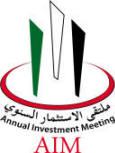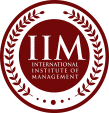|
|
|
Telecom Institute CoursesTelecommunication is the transmission of information, over significant distances, for the purpose of communication. In earlier times, telecommunications involved the use of visual signals, such as beacons, smoke, semaphore telegraphs, signal flags, and optical heliographs, or audio messages via coded drumbeats, lung-blown horns, or sent by loud whistles, for example. In the modern age of electricity and electronics, telecommunications now also includes the use of electrical devices such as telegraphs, telephones, and teletypes, the use of radio and microwave communications, as well as fiber optics and their associated electronics, plus the use of the orbiting satellites and the Internet. The first breakthrough into modern electrical telecommunications came with the push to fully develop the telegraph starting in the 1830s. The use of these electrical means of communications exploded into use on all of the continents of the world during the 19th century, and these also connected the continents via cables on the floors of the ocean. The use of the first three popular systems of electrical telecommunications, the telegraph, telephone and teletype, all required the use of conducting metal wires. A revolution in wireless telecommunications began in the first decade of the 20th century, with Guglielmo Marconi winning the Nobel Prize in Physics in 1909 for his pioneering developments in wireless radio communications. Other highly notable pioneering inventors and developers in the field of electrical and electronic telecommunications include Charles Wheatstone and Samuel Morse (telegraph), Alexander Graham Bell (telephone), Nikola Tesla, Edwin Armstrong, and Lee de Forest (radio), as well as John Logie Baird and Philo Farnsworth (television). Telecommunications play an important role in the world economy and the worldwide telecommunication industry's revenue was estimated to be $3.85 trillion in 2008.The service revenue of the global telecommunications industry was estimated to be $1.7 trillion in 2008, and is expected to touch $2.7 trillion by 2013. The Telecommunications Management Network is a protocol model defined by ITU-T for managing open systems in a communications network. It is part of the ITU-T Recommendation series M.3000 and is based on the OSI management specifications in ITU-T Recommendation series X.700. TMN provides a framework for achieving interconnectivity and communication across heterogeneous operations system and telecommunication networks. To achieve this, TMN defines a set of interface points for elements which perform the actual communications processing (such as a call processing switch) to be accessed by elements, such as management workstations, to monitor and control them. The standard interface allows elements from different manufacturers to be incorporated into a network under a single management control. For communication between Operations Systems and NEs (Network Elements), it uses the Common management information protocol (CMIP) or Mediation devices when it uses Q3 interface. TMN can be used in the management of ISDN, B-ISDN, ATM, and GSM networks. It is not as commonly used for purely packet-switched data networks. Modern telecom networks are automated, and are run by OSS software or
operational support systems. These manage modern telecom networks and provide
the data that is needed in the day-to-day running of a telecom network. OSS
software is also responsible for issuing commands to the network infrastructure
to activate new service offerings, commence services for new customers, and
detect and correct network faults. The framework identifies four logical layers of network management: Business Management A Network Element provides agent services, mapping the physical aspects of the equipment into the TMN framework. The TMN M.3000 series includes the following recommendations: M.3000 Tutorial Introduction to TMN Telecom Institute: Telecom Courses - Telecom Management Best Practices
|
Wall Street
|
|
Wall Street Research |
|






